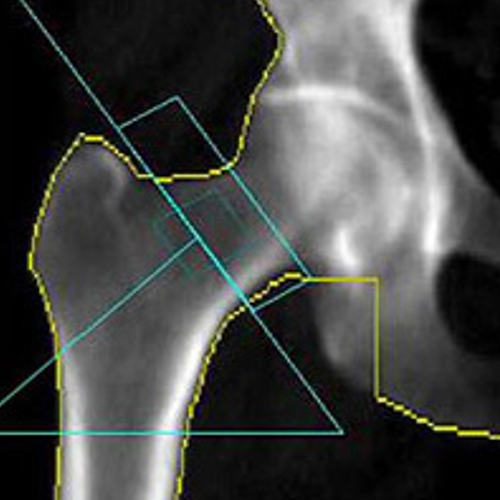DXA Bone Densitometry
ABOUT YOUR BONE DENSITY TEST...
Your doctor has requested you undergo a DXA bone density examination. The following information should answer some of the questions you may have regarding the procedure.

Answers to questions you might have:
WHAT IS A BONE DENSITY TEST AND WHY SHOULD I GET ONE?
A Dual-Energy X-Ray Absorptiometry (DXA) test is a bone density study used to determine whether or not you have osteoporosis or low bone mass, conditions that commonly affect women after menopause and, in some cases, men. It is a fast, safe, painless test that measures bone strength and can predict your risk for bone fracture. DXA may also be used as a follow-up procedure to monitor response to specific medications.
WHAT IS INVOLVED WITH A DXA TEST?
The DXA unit consists of a central device with a large flat table, and an "arm" suspended overhead. When measuring bone density in the spine, you lie on the table with your legs supported on a padded box to flatten the pelvis and spine. When measuring bone density in the hip, your foot will be placed in a brace designed to rotate your hip inward. In either case, the detector will slowly pass your body, generating images on a computer monitor.
You will be asked to lie very still and may be required to hold your breath for a few seconds to reduce the possibility of a blurred image. The test can take anywhere from 10 to 30 minutes, depending on the part of your body being imaged.
HOW DO I PREPARE FOR THE EXAM?
When preparing for your DXA screening, discontinue calcium, vitamin D, and multi-vitamin supplements for two full days prior to the exam date.
WHAT ARE THE BENEFITS OF DXA?
DXA is most often performed on the lower spine and hips. It also can measure vertebral height and assess possible vertebral fractures in the thoracic and lumbar spine. It is an advanced form of testing that is highly accurate and requires less radiation exposure than older methods of bone density testing.
